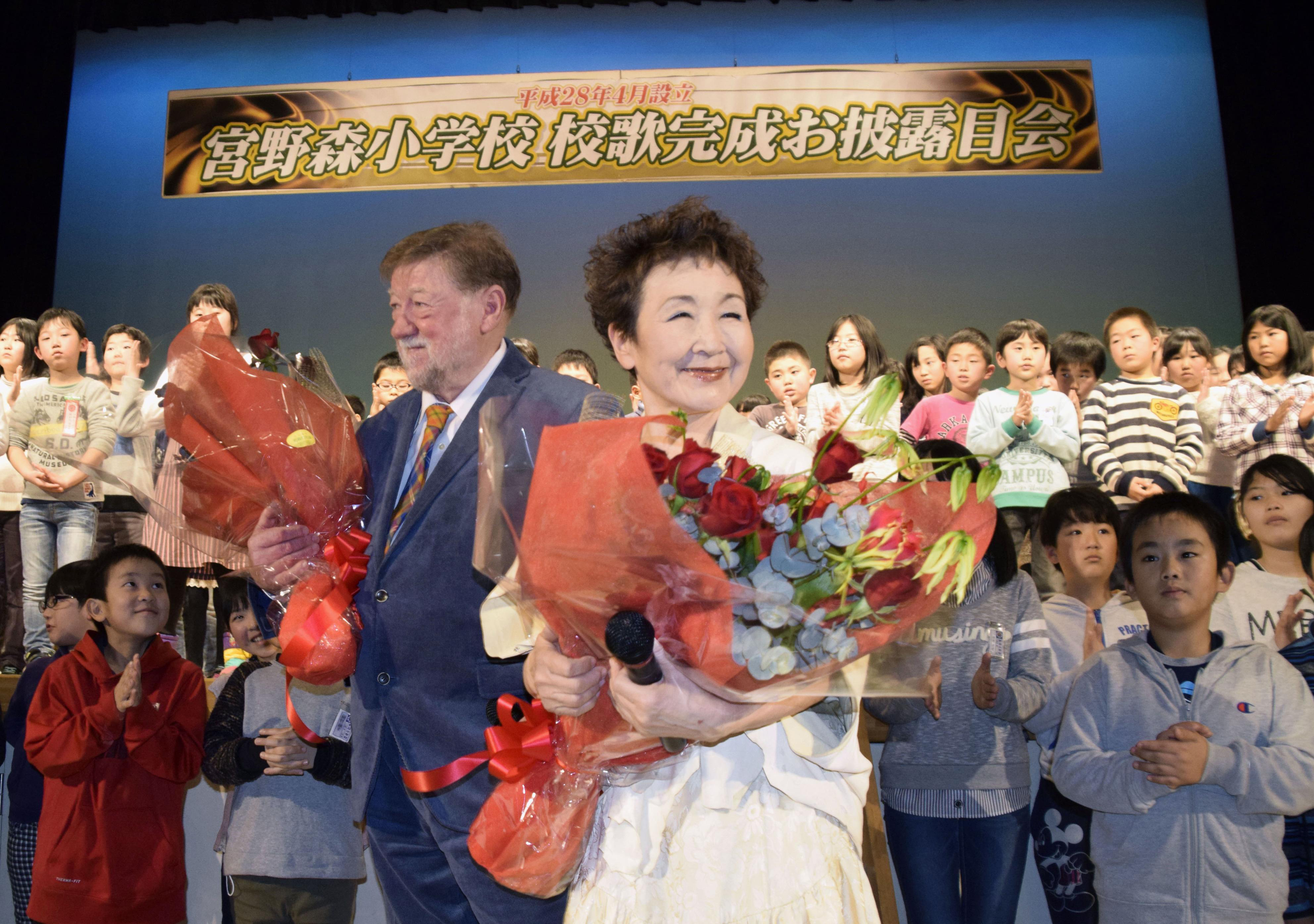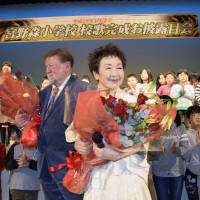Almost exactly five years ago, on March 11, 2011, an earthquake followed by a devastating tsunami wreaked havoc in the northeastern Tohoku region. Here where I live amid the faraway mountains of Nagano Prefecture, all of us connected with the C.W. Nicol Afan Woodland Trust wondered what we could do to help. Besides giving donations and joining the cleanup, I strongly felt there must be something that we were uniquely experienced to offer.
Ever since the trust was founded in 2002, we have been bringing traumatized or physically disadvantaged children on three-day programs that allow them to freely play and enjoy beautiful wild woodland. We are confident that these programs do a lot to alleviate the harm that has afflicted these children.
We tried to imagine what it must be like for survivors of that March 11 disaster who had lost family members and friends and witnessed homes, schools and workplaces being destroyed. Then, in the aftermath, they had been confronted with the sights and smells of their wrecked towns or communities. Consequently, we issued invitations for those stricken communities to come and spend three days and two nights in our woods, with us. This time we obviously could not just invite children. After such a disaster, families needed each other, so we invited everybody.
The city of Higashi-Matsushima in Miyagi Prefecture was the first to take up our offer and, in August 2011, 27 adults and children joined us.
When our guests alighted from the bus that had brought them (accompanied by our staff members) more than 400 kilometers southwest to our woodland in northern Nagano's alpine foothills, I could see fatigue and perhaps even apprehension in the faces of both adults and children.
Yet within a couple of hours, the children were running around, swinging from ropes and branches and exploring the woods — and already a lot had changed. They hadn't played outdoors for months, but now they were free and their delighted laughter and shouts filled the air. The faces of the adults changed, too, with smiles, twinkling eyes and excited questions easing their stress.
At the end of the three days, after our various woodland ceremonies — including a birthday cake and song for one adult and one child — I felt happy with what we had done.
However, it was then that three of the adults came to me with a request. One of the many plans to restore their hometown of Higashi-Matsushima included a proposal to relocate an elementary school to a hilly site of densely overgrown, neglected woodland above the reach of any future tsunami. They asked if we could help to bring light and biodiversity to those dark woods. They also asked for advice in the building of a new school that could incorporate the woods as a playground and a classroom.
As a result, for the past four years my staff and I have spent time every single month in Higashi-Matsushima, improving the woods, building trails, a tree house, a viewing platform and other structures that made the woods accessible for both play and education.
Regarding the school, though, I had one condition: If I were to be involved in creating a new purpose-built building, it would have to be constructed of wood. I was not interested in yet another ferro-concrete box.
Japan has the world's oldest and biggest wooden constructions in the Horyuji Temple and its wondrous pagoda still standing in Nara more than 1,400 years after it was founded in 607, and the huge Todaiji Temple, also in Nara, whose construction began in 728.
These and many other ancient Japanese wooden buildings have survived all the earthquakes thrown at them. Based on this tradition, combined with modern wooden materials and construction methods, buildings can now be designed that are well able to withstand natural disasters. Moreover, wooden buildings are far less likely to exacerbate the many allergies that are afflicting children, and they have also been proven to reduce the incidence of colds and influenza. In other words, properly constructed and maintained wooden buildings are both safer and healthier for children.
Wow, did I ever get attacked on that point!
Japanese politics are navel-to-navel Siamese twins with the ferro-concrete construction business. It was, and still continues to be, one hell of an uphill battle, especially with construction-linked politicians who would not venture out of their burrows and face off with this old Welsh-Japanese bear.
However, we had the courageous support of Higashi-Matsushima's mayor and its Board of Education, as well as of teachers, grandparents, students and numerous experts — including many involved in construction, education and health.
We have won the battle for a new, modern, wooden elementary school.
One of the country's leading architectural companies, Coelacanth K&H Architects Inc., has done the designs, and Sumitomo Forestry Co. Ltd. is undertaking construction — ensuring, between them, that this will be one of the best, if not the best, elementary school in Japan.
The new building should be completed by Dec. 25, 2016, and students and teachers are set to move in during January 2017. You can bet your boots that there will be great media fanfare over this, with a gaggle of previously doubting politicians and bureaucrats coming out to claim their share of the limelight. That's OK. We all know who our real supporters and friends are.
The new school has been named Miyanomori Elementary School. I should stress that this is a government school, not a private one. It will replace Nobiru Elementary School, which was destroyed by the tsunami, and Miyato Elementary School, whose buildings survived, but whose population has dropped. In the new school there will be 131 students from Nobiru and 18 from neighboring Miyato, making 149 in total.
It will be a beautiful school, modern, light, airy and safe — and with 7 hectares of lovely woodland and a magnificent view of the Pacific Ocean. However, it was sorely lacking a new school song — one which could bring pride to the communities of Nobiru and Miyato, and also be easy for the children to sing happily together.
I took the liberty of asking a dear old friend, Tokiko Kato, to compose music and lyrics for the song. Everyone who voiced an opinion was delighted to agree with that choice.
I have known Tokiko for more than 30 years and am a huge fan. She has traveled the world with her music, giving concerts in such places as Carnegie Hall in New York, as well as in towns and villages throughout Africa and Asia. Often dubbed "the Edith Piaf of Japan," Tokiko is a great singer, a powerful environmental and social activist, and one of my best friends. I've been honored to sing in many of her concerts (I am Welsh, after all).
On Feb. 12, 2016, the children, their teachers and families assembled at the Higashi-Matsushima Community Center, where the children, directed by Tokiko, gave a moving performance of the new school song, titled "Mori wa Tomodachi" ("The Forest is Our Friend").
From the first verse — which I have translated as, "High, high in the blue sky/ I want to be a bird/ Drop a seed on the earth/ Some day I want to be a big tree" — the audience was already deeply moved before hearing the next one, which proclaims, "Far, far across the ocean/ I want to be a voyaging fish/ Open both hands over the ground/ Someday I want to be a flower in love" — followed by the song's chorus: "The forest is our friend/ The sea too is our friend/ As are the birds, flowers and fish."
It will be even more moving at the official opening of Miyanomori Elementary School in January next year — and I doubt there will be many dry eyes when the audience on that occasion hears those young survivors sing one verse in particular, that goes, "On Nobiru's wide land/ Fields, paddies and beaches/ Even with the changes of time/ They are filled with life."
It's been a tough battle, but worth fighting for, even though it has made me unpopular (to say the least) in some circles of the present government. Watch this space for the results!




